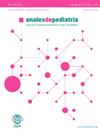Situación actual de supervivientes de tumores del sistema nervioso central en un hospital español
IF 2.1
4区 医学
Q2 PEDIATRICS
引用次数: 0
Abstract
Introduction
Despite the increasing number of central nervous system (CNS) tumour survivors, long-term (LT) sequelae remain a substantial burden on their health through various life stages. The aim of our study was to evaluate late morbidity, health-related quality of life (HRQoL), self-esteem, functional status, adaptive behaviour, physical activity and social outcomes such as education, employment, relationship status and possession of a driver's license, in addition to the role of LT effects of radiotherapy on these outcomes.
Methods
The study included 111 CNS tumour survivors with a minimum of 10 years of followup. The assessment of patients included a comprehensive clinical evaluation and psychological questionnaires: SF-36 for HRQoL and Rosenberg self-esteem scale. Functional status was assessed with the Lansky/Karnosky scales and adaptive behaviour with the Vineland-II scale. Patients also completed one questionnaire that assessed physical activity and another that assessed other social variables.
Results
The mean current age of CNS tumour survivors was 20 years (range, 12-34). The median time since diagnosis was 13 years (range, 10-26). The median age at diagnosis was 6 years (range, 1-18). The most prevalent LT sequelae were neurologic (55%), followed by neuropsychiatric (53.1%) and endocrine (49.5%) sequelae. Survivors treated with radiotherapy (n = 52) had poorer outcomes in terms of adaptive behaviour, educational attainment and relationship status compared to those who did not receive radiotherapy, but we did not find differences in quality of life or self-esteem scores between these groups.
Conclusion
We found a high prevalence of LT sequelae in CNS tumour survivors, especially in those who received radiotherapy. In these patients, LT sequelae have a significant impact on functional status and social outcomes, but not on quality of life or self-esteem.

西班牙一家医院中中枢神经系统肿瘤幸存者的现状
尽管越来越多的中枢神经系统(CNS)肿瘤幸存者,长期(LT)后遗症仍然是他们在各个生命阶段健康的重大负担。本研究的目的是评估晚期发病率、健康相关生活质量(HRQoL)、自尊、功能状态、适应行为、身体活动和社会结果(如教育、就业、关系状况和拥有驾驶执照),以及放疗对这些结果的LT效应的作用。方法本研究纳入111例中枢神经系统肿瘤幸存者,随访至少10年。对患者的评估包括综合临床评估和心理问卷:SF-36 HRQoL和Rosenberg自尊量表。用Lansky/Karnosky量表评估功能状态,用Vineland-II量表评估适应行为。患者还完成了一份评估身体活动的问卷和另一份评估其他社会变量的问卷。结果中枢神经系统肿瘤幸存者的平均年龄为20岁(范围12-34岁)。诊断后的中位时间为13年(范围10-26年)。诊断时的中位年龄为6岁(范围1-18岁)。LT最常见的后遗症是神经后遗症(55%),其次是神经精神后遗症(53.1%)和内分泌后遗症(49.5%)。与未接受放射治疗的幸存者相比,接受放射治疗的幸存者(n = 52)在适应行为、受教育程度和关系状况方面的结果较差,但我们未发现两组之间在生活质量或自尊评分方面存在差异。结论我们发现中枢神经系统肿瘤幸存者中LT后遗症的发生率很高,特别是接受放疗的患者。在这些患者中,LT后遗症对功能状态和社会结果有显著影响,但对生活质量或自尊没有影响。
本文章由计算机程序翻译,如有差异,请以英文原文为准。
求助全文
约1分钟内获得全文
求助全文
来源期刊

Anales de pediatria
医学-小儿科
CiteScore
2.10
自引率
4.80%
发文量
155
审稿时长
44 days
期刊介绍:
La Asociación Española de Pediatría tiene como uno de sus objetivos principales la difusión de información científica rigurosa y actualizada sobre las distintas áreas de la pediatría. Anales de Pediatría es el Órgano de Expresión Científica de la Asociación y constituye el vehículo a través del cual se comunican los asociados. Publica trabajos originales sobre investigación clínica en pediatría procedentes de España y países latinoamericanos, así como artículos de revisión elaborados por los mejores profesionales de cada especialidad, las comunicaciones del congreso anual y los libros de actas de la Asociación, y guías de actuación elaboradas por las diferentes Sociedades/Secciones Especializadas integradas en la Asociación Española de Pediatría.
 求助内容:
求助内容: 应助结果提醒方式:
应助结果提醒方式:


